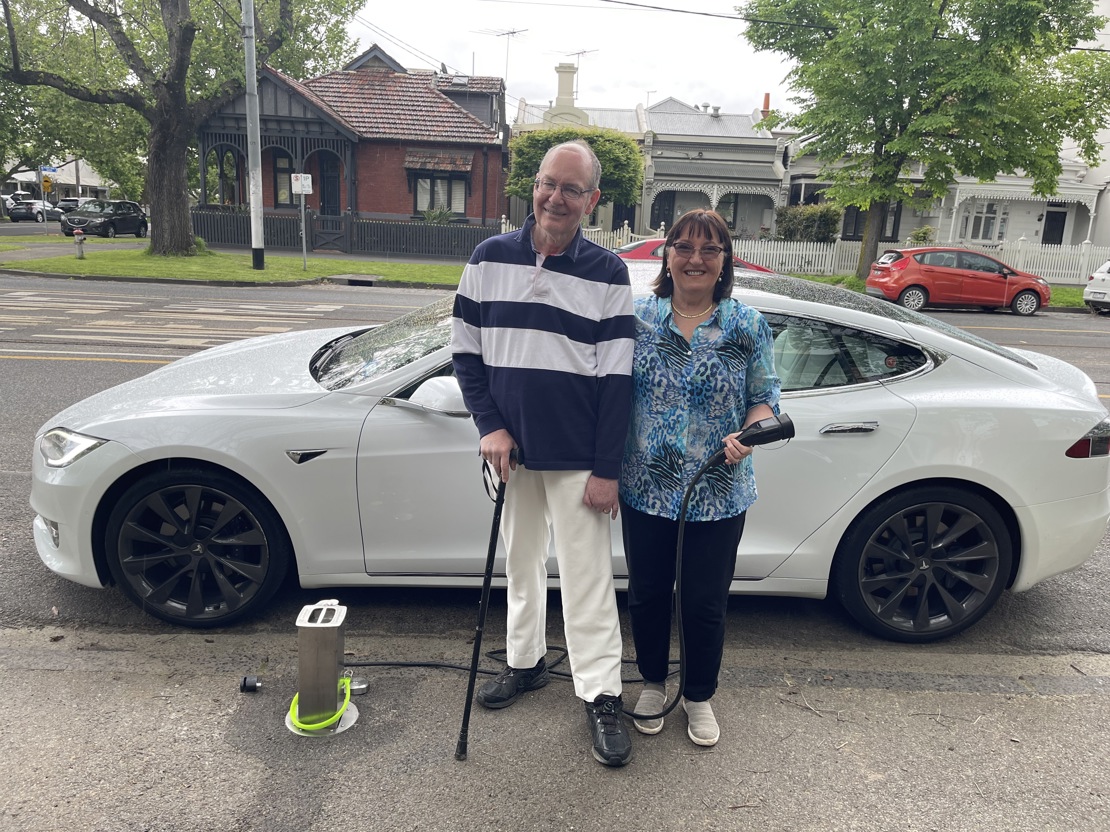The pop-up Kerb Charge unit allows residents without off-street parking (such as garages and driveways) to easily charge their electric vehicles parked outside their homes.
The Kerb Charging Permit issued by Port Phillip Council to allow trial participants to install a charger on public land is the first of its kind in Australia.
As the underground charging lead is connected to a participant's personal electricity supply, only they can use the lockable 35 cm high charger, which pops up from a footpath or nature strip when in use.
The trial will help determine the merits of making kerbside charging more widely available to EV owners, especially those who struggle to charge without easy access to a power source at home.
A vehicle could be fully charged even if access to a parking spot outside a home was only available overnight (residents do not 'own' the on-street parking spaces outside their homes).
Mayor Marcus Pearl said the initiative is part of Council's efforts to deliver a network of EV charging infrastructure on public land to support the uptake of EVs and reduce warming greenhouse gases.
"About 11 per cent of our community's carbon emissions come from transport, with 327,926 tonnes of carbon dioxide released every year. As a bayside city, we are vulnerable to the effects of climate change so we are keen to do what we can to help reduce the use of fossil fuels," Cr Pearl said.
"Several other councils are eagerly awaiting the results of our trial so we hope this will be a gamechanger in Victoria and beyond."
Albert Park resident Kevin, a passionate advocate for addressing climate change, is excited about becoming the first participant in the trial. The changer has been installed on the kerb outside his home, ready for the delivery of the EV he has ordered.
"It's almost essential to be have a charger at home. This was the only option I saw without having to move to a house with a garage," Kevin said. "And it means I'm doing my bit for the environment."

Albert Park residents Kevin and Karen are the first participants in Port Phillip Council's kerbside EV charging trial.
The flood-proof Kerb Charger, approved for use by Energy Safe Victoria, is Australia's first onstreet personal EV charger. It was invented by Rod Walker of Williamstown-based company Kerb Charge.
Mr Walker plans to manufacture the chargers in Williamstown. Council is assessing a second permit application for the trial which will have at least 10 participants.
"I got into this because I wanted to do something in the environmental space to help combat climate change. Each petrol car that this technology can take off the road means there is 4.6 less tonnes of carbon dioxide released per annum," he said.
"This is convenient and ultimately cheaper - it's like why run down to the shops to charge your phone when you can do it at home?"
The permit holder pays for buying and installing the charger, which costs about $6000. It costs $124 for the permit which carries an annual fee of $100. A refundable bond of $500 is also retained by Council for asset protection.
The cost of drawing power from the grid is about 10 cents a kilowatt hour when charging offpeak, meaning an overnight charge could cost just a few dollars. The cost is even lower If a participant is using energy from solar panels. Mr Walker estimates a typical petrol or diesel car user would save between $1500 to $2000 a year.
There were about 324 EVs registered to Port Phillip residents in 2020, with this number continuing to grow due to factors including lower costs and government incentives.






